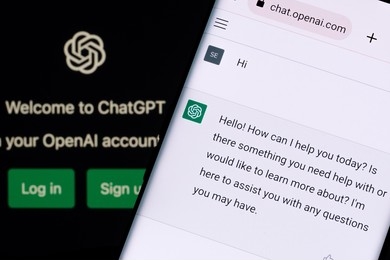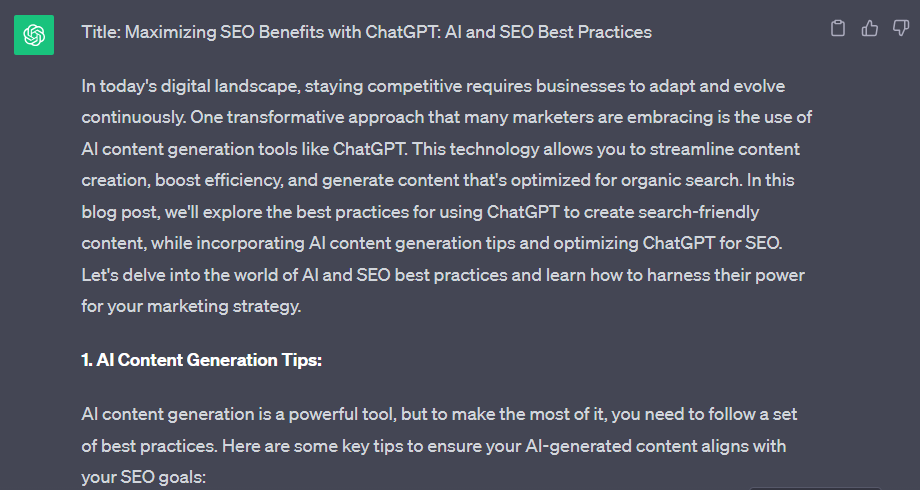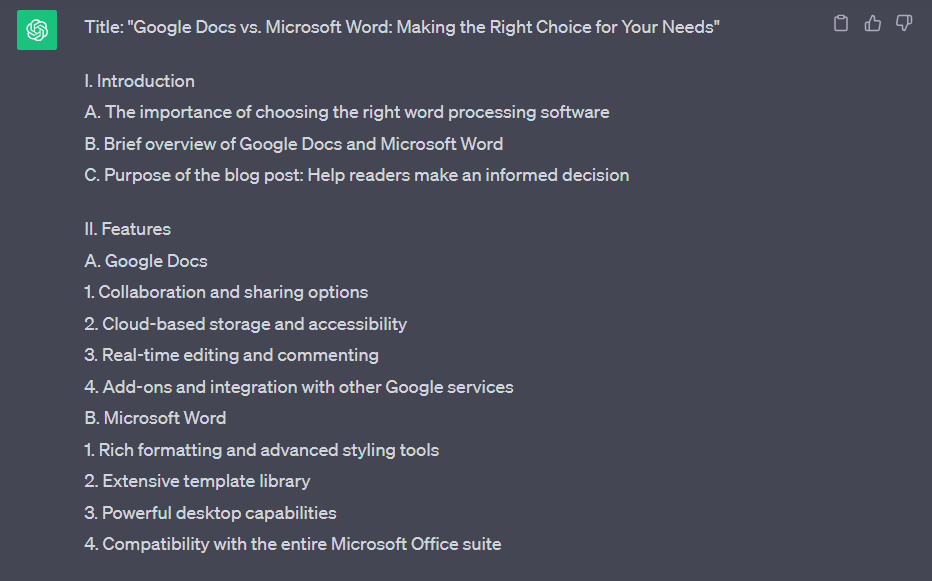
Ever wondered what the top 5 ChatGPT prompts that professional content writers use to create engaging and effective content are?
In this article, we will explore with you the top 5 best ChatGPT prompts that will not only save time but also help you generate content that captivates your audience and drives conversions.
What is the use of ChatGPT prompts?
ChatGPT prompts are revolutionising content creation. In response to a simple text request, this powerful AI application can generate high-quality content that impresses people. ChatGPT is a fantastic tool for creating engaging, convincing, and visually appealing content that resonates with your target audience.
The first step to getting great results from ChatGPT is to come up with the right prompts. Without strategic prompting, you might end up with generic or nonsensical content.
If you want to learn how to use ChatGPT in just two days, check out this concise and user-friendly ChatGPT course that is suitable for individuals of all ages.
Watch how our esteemed trainer, Daryl Kang, discussed the current version of ChatGPT, known as GPT-4 Turbo. This new iteration features notable enhancements such as an extended knowledge cutoff date of April 2023, increased prompt length capabilities, improved adherence to instructions, and more.
To gain further insights into their differences, we encourage you to explore the detailed comparison of GPT-4 Turbo and GPT-3.5.
Prompt #1: Content Sections Focused on Benefits
This structured ChatGPT prompt ensures that the content stays focused on the reader’s advantages. This approach is excellent for creating posts that directly address the interests and needs of your audience.
The prompt:
Write a [number of words] blog post about [topic], focusing on the benefits for the reader. Use these section headings and fill in key points of each section:
Introduction:
Section 1 – Benefit 1:
Section 2 – Benefit 2:
Section 3 – Benefit 3:
Conclusion:
Custom prompt with an example on ChatGPT:
Here are the 3 main reasons why this is an effective ChatGPT prompt:
- Provides clear instructions and constraints – The word count, section headings, introduction and conclusion give ChatGPT necessary guardrails to stay on track.
- Structured around benefits to the reader – Focusing each section on a key benefit creates useful, engaging content tailored to the audience.
- Gives creative latitude within framework – Letting ChatGPT fill in points for each section allows for optimized content while maintaining focus on the benefits.
The output generated by ChatGPT for the blog post “content strategy” with our custom prompt:
To view the full output, click here.
This prompt maintains a structure that centers on the advantages to the readers, while allowing ChatGPT the freedom to generate within specified segments. The outcome is a superior-quality draft text, designed specifically to captivate the audience.
Prompt #2: Blog Content Framework
This prompt for Blog Content Framework keeps blog posts well-organised, on-topic, and optimised. It’s ideal when you need structure in your content and still let ChatGPT express creativity while generating targeted prompt responses.
The prompt:
When writing a [word count] blog post about [topic], the content should include:
Attention-grabbing headline using [keyword]
Introduction briefly explaining topic and why it matters to reader
Section with top [3-5] tips/strategies for [aspect of topic]
Section about benefits and results readers can expect from tips
Section with [1-2] relevant examples or case studies
Section addressing and overcoming objections/concerns
Strong conclusion re-stating key points
Friendly, conversational tone with second-person language
Smooth transitions between sections
Target keyword: [main keyword] used [2-3] times naturally
Now write the full blog post using this structure and elements.
Custom prompt with an example on ChatGPT:
Here are the 3 main reasons why this is an effective ChatGPT prompt:
- Giving the content direction and focus by providing an overview and structure so that the AI will stay on topic.
- Specifying the sections, word count, and number of keyword uses keeps the content on track. Without these details, the AI may write too much or too little.
- The conversational tone and transitions create a more engaging, readable post compared to robotic sounding content.
The output generated by ChatGPT for the blog post ”How to Memorise Things Quickly” with our custom prompt:
To view the full output, click here.
This detailed prompt is amazing because it provides clarity, structure, and focus for ChatGPT to create a high-quality, on-target blog post tailored to your needs. The more constraints and guidance you give ChatGPT, the better the output will be. The AI needs clear direction.
Prompt #3: Creative Hooks and Intros
This prompt is designed to create engaging introductions powered by prompt engineering that not only grab attention but also incorporate relevant keywords. You can use these hooks as preliminary starting points, or select the most compelling one to reel in your readers.
The prompt:
Write 3 creative opening hooks/introductions for a blog article about [topic]. Make the introductions captivating and optimized for search and social media.
Custom prompt with an example on ChatGPT:
Here are 3 main benefits of this ChatGPT prompt when generating captivating, optimized introductions:
- Creates attention-grabbing openings – The instruction to write “creative” and “captivating” hooks results in introductions that pique reader interest right away. This improves engagement.
- Incorporates SEO keywords – Requesting optimization for search engines leads to introductions that seamlessly work in relevant keywords to boost discoverability.
- Provides options to choose from – Generating 3 different introductions gives flexibility to pick the best one or draw inspiration from multiple versions.
The output generated by ChatGPT to write creative hooks/introductions with our custom prompt:
This prompt leads to compelling introductions that capture interest, utilize keywords effectively, and offer options. As the AI response shows, it provides multiple prompt response options to choose from.
Prompt #4: SEO-Focused Content
This prompt seamlessly builds SEO keywords into prompt responses through precise prompt engineering. This optimises content for search without awkwardness.
The prompt:
Write high-quality content for a [word count] blog post about [topic] that is optimized for organic search with natural incorporation of the following [3-5] key phrases: [key phrases].
Custom prompt with an example on ChatGPT:
Here are 3 main benefits of this prompt for creating SEO-optimized content with ChatGPT:
- Directly incorporates target keywords – The instruction to naturally integrate specific key phrases ensures they are worked into the content rather than awkwardly bolted on.
- Produces search-optimized copy – Focusing the prompt on SEO and organic search rankings will result in content purpose-built to rank well.
- Prevents keyword stuffing – Capping the number of key phrases prevents over-optimization and maintain readability.
The output generated by ChatGPT to create blog post utilising SEO best practices:
To view the full output, click here.
This prompt assists in creating SEO-focused content that seamlessly integrates keywords, maximising visibility and search performance without appearing spammy. If you’re interested in understanding the role of Search Engine Optimization (SEO), visit this page. It will help you grasp how you can use SEO in your content marketing approach to boost organic traffic to your website.
Prompt #5: Comparison Post Outline
This prompt uses a structured outline prompt for comparison posts. This prompt engineering keeps ChatGPT’s responses focused on informing readers.
The prompt:
Write an outline for a blog post that compares [product/service #1] and [product/service #2] to help the reader determine which is better for their needs. Include an objective comparison table and summarize the key differences in 3 key areas: features, price, and use cases. Focus on assisting the reader in making an informed decision.
Custom prompt with an example on ChatGPT:
Here are 3 key benefits of this comparison post prompt:
- Provides a clear structure – The outline format with specified sections gives the prompt clear direction to shape the content.
- Focuses on reader education – By focusing on helping the reader make an informed decision, the content will be oriented to teaching rather than selling.
- Allows for objective analysis – Requesting an unbiased pro/con comparison table facilitates an impartial analysis of the options.
The output generated by ChatGPT on whether Google Docs or Microsoft Word is more suitable for your audience:
To view the full output, click here.
Frequently Asked Questions
What are the best prompts for ChatGPT?
Crafting effective prompts for ChatGPT is key to obtaining useful and accurate responses. The best prompts are clear, specific, and direct about what you're seeking. Here are some types of prompts that tend to work well:
Content Creation:
- Specific Formats:
- "Write a catchy product description for [product name]."
- "Compose a poem about [theme] in the style of [poet]."
- "Generate a script for a short comedy skit."
- Structure and Focus:
- "Write a [word count] blog post about [topic], focusing on the 3 key benefits for readers."
- "Create an outline for a comparison article between [product/service 1] and [product/service 2]."
- "Craft a captivating introduction for a website landing page about [service]."
Information Access and Processing:
- Research and Learning:
- "Summarise the key points of this article on [topic]."
- "Explain the concept of [the complex topic] in simple terms."
- "Compare and contrast [two historical figures]."
- Personal Productivity:
- "Generate a to-do list for the day, prioritising tasks based on urgency and importance."
- "Plan a trip to [destination] based on my interests and preferences."
- "Help me brainstorm solutions to [the problem]."
Creativity and Entertainment:
- Storytelling and roleplaying:
- "Continue this story: '[Opening sentence]'."
- "Create a character bio for a [type of character] in a fantasy world."
- "Let's play a game of 'Would you rather?' with questions related to [theme]."
- Music and Art Generation:
- "Compose a short piece of music in the style of [composer]."
- "Generate a poem with rhyming couplets and the following keywords: [list of words]."
- "Describe a painting in the style of [artist] that depicts [scene]."
Remember:
- Specificity is key. The more specific your prompts are, the better results you'll get. Provide details, context, and the desired tone to guide ChatGPT.
- Experiment and iterate: Don't be afraid to experiment with different prompts and formats. What works for one task might not work for another, so find what works best for you.
- Fact-check and edit: ChatGPT is a powerful tool, but it's not perfect. Always fact-check its outputs and edit for accuracy and clarity.
By understanding the different types of prompts and experimenting with specificity, you can unlock the full potential of ChatGPT and use it for a wide range of tasks to enhance your work, learning, and creative pursuits.
How do I improve ChatGPT prompts?
Here are some effective strategies to improve ChatGPT prompts:
1. Clarity and Specificity:
- State your goals clearly: Explicitly mention what you want ChatGPT to produce, whether it's a blog post, a poem, a summary, or something entirely else.
- Provide specific details: Include relevant keywords, context, examples, or instructions to guide ChatGPT in the right direction.
- Set clear expectations: Specify the desired tone, length, formatting, or other stylistic preferences.
2. Structure and Organisation:
- Break down complex tasks: Divide large projects into smaller, more manageable steps with multiple prompts.
- Provide a framework: Offer outlines, templates, or specific sections for ChatGPT to fill in, giving it a clear structure to follow.
- Use bullet points or lists: This can make it easier for ChatGPT to understand and process your requests.
3. Tone and Creativity:
- Encourage creativity: Use words like "create," "generate," "imagine," or "brainstorm" to prompt imaginative responses.
- Specify tone and style: Ask for content that's "formal," "informal," "funny," "persuasive," or whatever tone suits your needs.
- Provide examples: If you have a particular style or voice in mind, share examples to help ChatGPT align with your vision.
4. Iteration and Experimentation:
- Try different approaches: Don't be afraid to experiment with various prompt structures, lengths, and levels of detail.
- Provide feedback: Evaluate ChatGPT's responses and adjust your prompts accordingly to refine the results.
- Use trial and error: Find what works best for you and your specific tasks through experimentation.
5. Additional Tips:
- Proofread and edit: Always review ChatGPT's outputs for accuracy, clarity, and coherence.
- Check for biases: Be aware of potential biases in ChatGPT's responses and evaluate them critically.
- Stay updated: Keep up with the latest developments and best practices in prompt engineering to optimise your results.
Remember: Crafting effective prompts is an art, not a science. With practice, patience, and a willingness to experiment, you'll discover how to create prompts that consistently yield high-quality, relevant, and creative responses from ChatGPT.
What is the prompt to make ChatGPT do anything?
There is no single "magic prompt" that can make ChatGPT do anything asked. As an AI system, ChatGPT has certain limitations around accuracy, knowledge breadth, content biases, and potential harm.
However, the most effective way to get quality responses from ChatGPT is to provide very detailed, structured prompts specifying exactly what you want it to write, create, summarise, or explain, focused on helping humans. Clearly outlining the request with formatting, ideal word counts, examples, and guardrails allows ChatGPT to generate helpful, targeted responses.
But it's important to remember that ChatGPT has restrictions against outputs that are illegal, unethical, biassed, or factually unreliable. Setting proper expectations for its capabilities to augment, not replace, human intellect can lead to the most productive uses. Detailed, thoughtful prompting yields the best results.
Who owns ChatGPT?
ChatGPT is developed and owned by OpenAI, an artificial intelligence research lab. OpenAI initially started as a non-profit organisation but later established a for-profit arm, known as OpenAI LP, to better fund its research. The organization has been known for its commitment to advancing AI in a safe and beneficial manner, and it is backed by various investors.
OpenAI was established by a number of notable figures in the tech sector. Some of the founders include Elon Musk and Sam Altman. Altman was originally the CEO, but he has since been succeeded by Mira Murati, who is the company's Chief Technology Officer.
The company is notable for its development of advanced AI models like GPT-3 and GPT-4, of which ChatGPT is a part, and is recognised for its significant contributions to the field of artificial intelligence.
What are the benefits of using strategic ChatGPT prompts for content creation?
Using thoughtful, well-structured prompts unlocks significant benefits when leveraging ChatGPT to generate content:
- Creates content focused on reader needs and benefits rather than self-promotion
- Provides necessary constraints for clarity while allowing AI creativity
- Results in higher quality drafts tailored to goals like SEO, conversions
- Saves substantial time over writing from scratch
- Allows focus on refining vs. structuring from blank page
- Multiple prompt variations mean more ideas to pull from
- Testing prompts builds knowledge of what works best
What are some key elements of effective ChatGPT prompts?
Some vital components of strategic ChatGPT prompts that produce the best results include:
- Clear Instructions: Define word count, sections, formatting, examples.
- Audience Focus: Concentrate on reader benefits and assisting decisions.
- Constraints: Outline sections, data to include, guidelines to fuel creativity.
- Tone Guidance: Share examples of desired language style and analogies.
- Optimization Factors: Specify keyword targets, headlines to integrate.
- Variations: Request 3-5 intro options or content formats to choose from.
Effective prompting provides abundant guardrails and criteria while setting expectations around helping humans in harmless ways. The more details supplied, the better ChatGPT can respond on point. Setting the key objectives, parameters and outputs desired leads to impactful, customized content.
What precautions should I take before publishing ChatGPT-generated content?
It's important to take several precautions before publishing any content generated by ChatGPT:
- Fact check details and claims to correct potential inaccuracies
- Scan for plagiarism via Google to avoid copied work
- Review for harmful, biased or discriminatory language
- Edit, refine and adapt the raw text substantially
- Explicitly acknowledge ChatGPT's contribution
- Comply with any publisher guidelines around AI content
- Check appropriateness for the target audience
- Assess suitability for supposed author/outlet brand voice
- Gauge whether arguments/conclusions logically follow premises
While ChatGPT can provide helpful drafting support, human creativity, critical thinking and accountability are vital when distributing output at scale. Using its content responsibly while correcting limitations builds trust.
To Conclude:
Strategic prompting is the key to unlocking ChatGPT’s potential for creating high-converting marketing content. As shown through the examples covered in this article, prompts that focus on benefits, optimisation, and educating the reader will result in content that sells.
Follow these proven templates to utilise ChatGPT for drafts that boost engagement and ROI. With the right prompts as your blueprint, ChatGPT can rapidly generate copy that captures attention and drives conversions.
Read more amazing ChatGPT content here:












